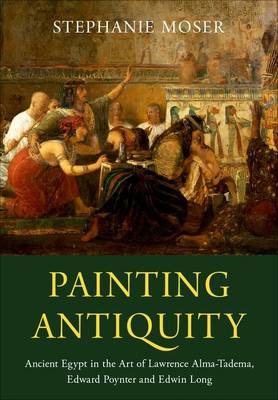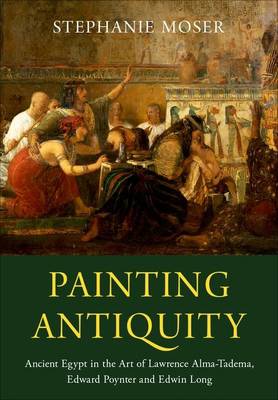
Je cadeautjes zeker op tijd in huis hebben voor de feestdagen? Kom langs in onze winkels en vind het perfecte geschenk!
- Afhalen na 1 uur in een winkel met voorraad
- Gratis thuislevering in België vanaf € 30
- Ruim aanbod met 7 miljoen producten
Je cadeautjes zeker op tijd in huis hebben voor de feestdagen? Kom langs in onze winkels en vind het perfecte geschenk!
- Afhalen na 1 uur in een winkel met voorraad
- Gratis thuislevering in België vanaf € 30
- Ruim aanbod met 7 miljoen producten
Zoeken
Painting Antiquity
Ancient Egypt in the Art of Lawrence Alma-Tadema, Edward Poynter and Edwin Long
Stephanie Moser
Hardcover | Engels
€ 273,95
+ 547 punten
Omschrijving
Inspired by newly discovered antiquities of the ancient world exhibited in the museums of Europe and celebrated in the illustrated press of the day, the leading British history painters Sir Lawrence Alma-Tadema, Sir Edward Poynter and Edwin Long created a striking body of artworks in which archaeology was a prime focus. Of the growing community of historicist and classicist painters in mid-nineteenth century Britain, these artists expressed a passion for archaeological detail, and their aesthetic engagement with ancient material culture played a key role in fostering the enthusiasm for antiquity with wider audiences. Painting Antiquity explores the archaeological dimension of their paintings in detail, addressing how the relationship these artists had with ancient objects represented a distinctive and important development in the cultural reception of the past. The book also considers the inspiration for the movement defined as "archaeological genre painting," the artistic and historic context for this new style, the archaeological sources upon which the artworks were based, and the critical reception of the paintings in the world of Victorian art criticism. Alongside extensive visual evidence, rendered here in both striking color and black-and-white imagery, Stephanie Moser shows how this artistic practice influenced our understanding of ancient Egypt. Further, she argues that these paintings affected the development of archaeology as a discipline, revealing how the painters had an intense engagement with archaeology, representing artefacts in extraordinary detail and promoting the use of ancient material culture according to an aesthetic agenda. The issues raised by placing importance on concepts of beauty and decoration, over values such as rarity, function, or historical use continue to divide archaeologists and art historians in the present day. Ultimately, by demonstrating how the artistic dialogue with antiquity contributed to defining it, Painting Antiquity sheds important new light on the two-way exchanges between visual representations of the past and knowledge formation.
Specificaties
Betrokkenen
- Auteur(s):
- Uitgeverij:
Inhoud
- Aantal bladzijden:
- 624
- Taal:
- Engels
Eigenschappen
- Productcode (EAN):
- 9780190697020
- Verschijningsdatum:
- 12/12/2019
- Uitvoering:
- Hardcover
- Formaat:
- Genaaid
- Afmetingen:
- 180 mm x 257 mm
- Gewicht:
- 1474 g

Alleen bij Standaard Boekhandel
+ 547 punten op je klantenkaart van Standaard Boekhandel
Beoordelingen
We publiceren alleen reviews die voldoen aan de voorwaarden voor reviews. Bekijk onze voorwaarden voor reviews.









